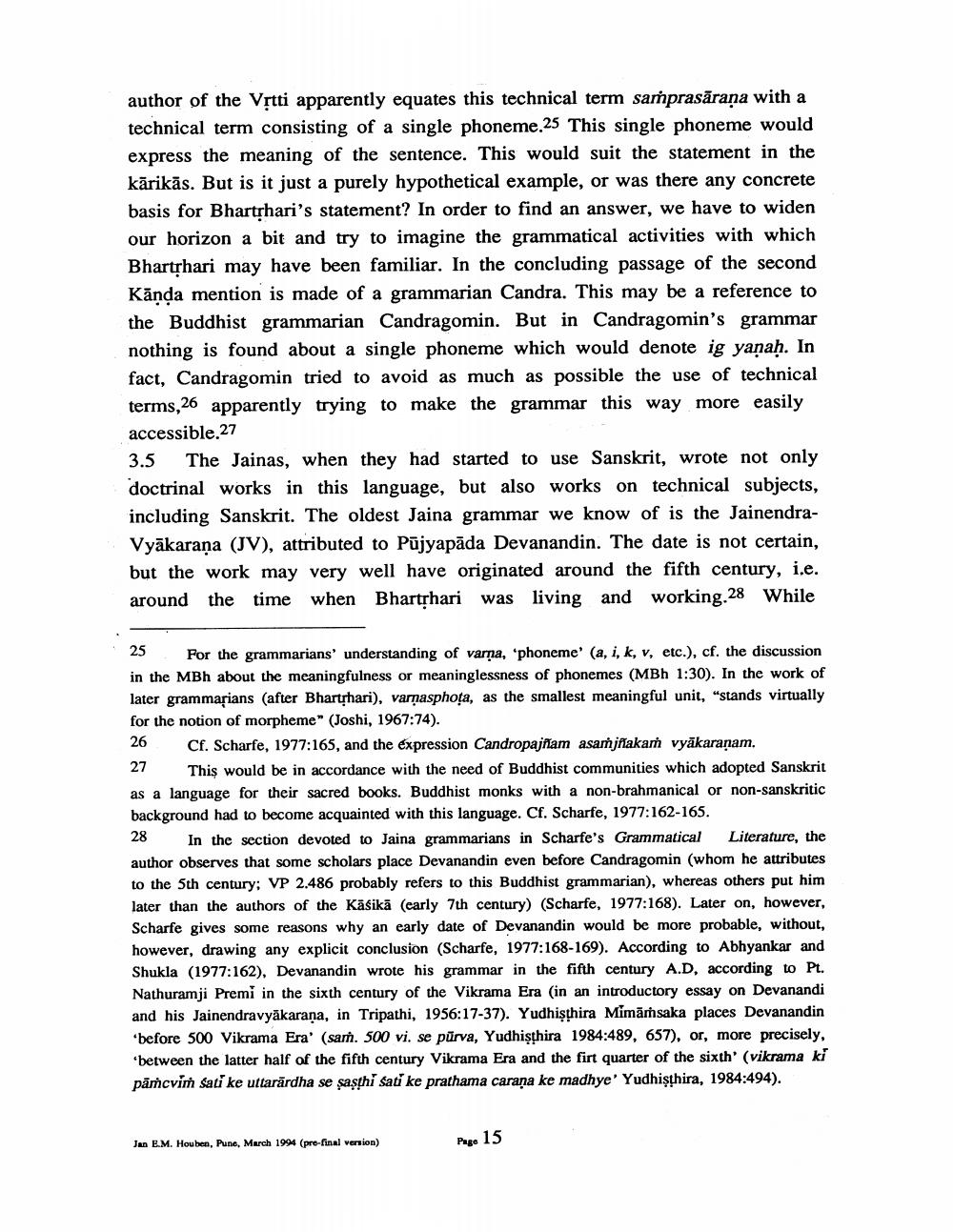________________
author of the Vștti apparently equates this technical term samprasārana with a technical term consisting of a single phoneme.25 This single phoneme would express the meaning of the sentence. This would suit the statement in the kārikās. But is it just a purely hypothetical example, or was there any concrete basis for Bhartshari's statement? In order to find an answer, we have to widen our horizon a bit and try to imagine the grammatical activities with which Bhartshari may have been familiar. In the concluding passage of the second Kānda mention is made of a grammarian Candra. This may be a reference to the Buddhist grammarian Candragomin. But in Candragomin's grammar nothing is found about a single phoneme which would denote ig yana). In fact, Candragomin tried to avoid as much as possible the use of technical terms, 26 apparently trying to make the grammar this way more easily accessible.27 3.5 The Jainas, when they had started to use Sanskrit, wrote not only doctrinal works in this language, but also works on technical subjects, including Sanskrit. The oldest Jaina grammar we know of is the JainendraVyākarana (JV), attributed to Pūjyapāda Devanandin. The date is not certain, but the work may very well have originated around the fifth century, i.e. around the time when Bhartphari was living and working.28 While
27
25 For the grammarians' understanding of varna, 'phoneme' (a, i, k, v, etc.), cf. the discussion in the MBh about the meaningfulness or meaninglessness of phonemes (MBh 1:30). In the work of later grammarians (after Bharthari), varnasphota, as the smallest meaningful unit, "stands virtually for the notion of morpheme" (Joshi, 1967:74). 26 Cf. Scharfe, 1977:165, and the expression Candropajram asamjfakarh vyäkaranam.
This would be in accordance with the need of Buddhist communities which adopted Sanskrit as a language for their sacred books. Buddhist monks with a non-brahmanical or non-sanskritic background had to become acquainted with this language. Cf. Scharfe, 1977:162-165. 28 In the section devoted to Jaina grammarians in Scharfe's Grammatical Literature, the author observes that some scholars place Devanandin even before Candragomin (whom he attributes to the 5th century: VP 2.486 probably refers to this Buddhist grammarian), whereas others put him later than the authors of the Käsikā (carly 7th century) (Scharfe, 1977:168). Later on, however, Scharfe gives some reasons why an early date of Devanandin would be more probable, without, however, drawing any explicit conclusion (Scharfe, 1977:168-169). According to Abhyankar and Shukla (1977:162). Devanandin wrote his grammar in the fifth century A.D, according to Pt. Nathuramji Premi in the sixth century of the Vikrama Era (in an introductory essay on Devanandi and his Jainendravyākarana, in Tripathi, 1956:17-37). Yudhisthira Mimāmsaka places Devanandin *before 500 Vikrama Era' (sam. 500 vi. se pūrva, Yudhisthira 1984:489, 657), or, more precisely,
between the latter half of the fifth century Vikrama Era and the firt quarter of the sixth' (vikrama ki pāmcvim sati ke uttarārdha se sasthi satí ke prathama caraṇa ke madhye' Yudhisthira, 1984:494).
Jan E.M. Houben, Pune, March 1994 (pre-final version)
Page 15




